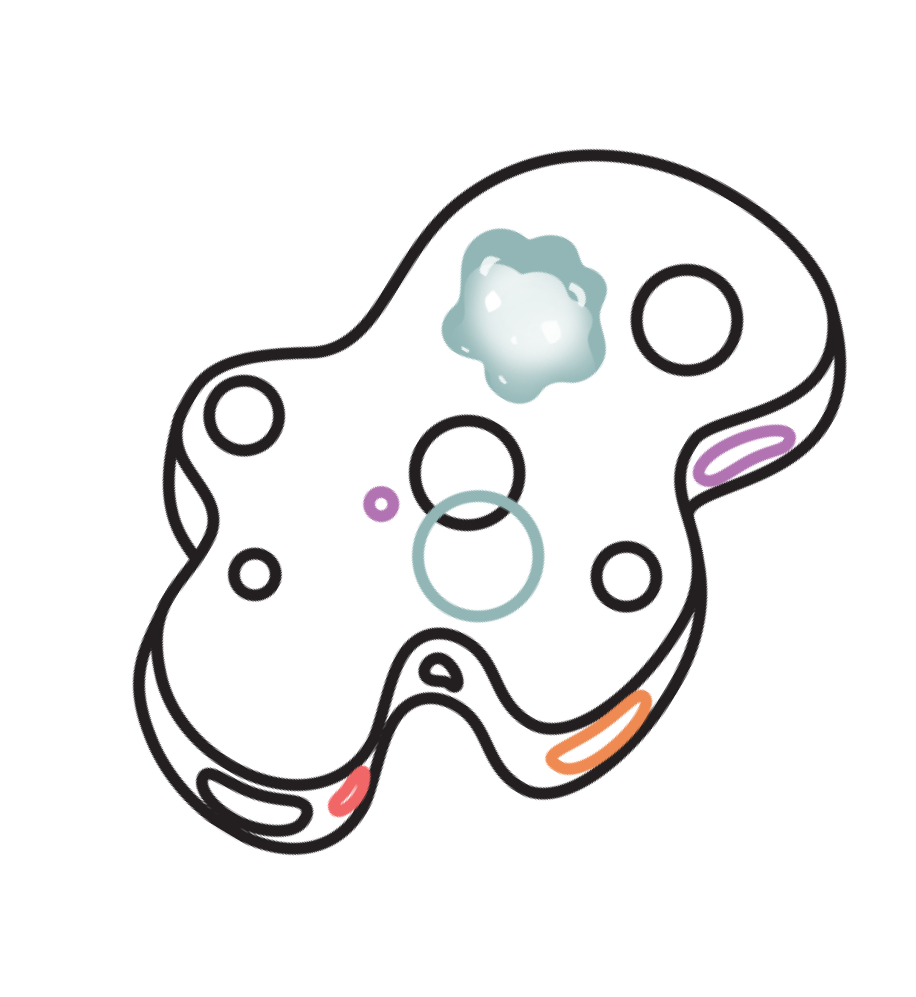What is Meditation?
Meditation is the formal act of mindfulness. Mindfulness is awareness that arises through paying attention, on purpose, in the present moment, non-judgmentally.
There's Only One Reality
As explored in another blog, everyone lives at the center of their own observable where everything you see is in the past. It takes time for light takes time to travel from point A to point B, even at 186,000 miles per second. Simply put, you're seeing the sun as it was 8.3 minutes ago, Saturn as it was ~90 minutes ago, and the supermassive blackhole at center of the Milky Way galaxy as it was ~25,000 years ago. You're always looking back in time. From a small butterfly 10 meters away to a star 10 million light years away.
At the center of your observable universe lies your idea space with all your thoughts, emotions, sensations, and perceptions.

Figure 1. Your observable universe is a giant sphere centered on you where everything you see is in the past.
What is the present if everything you see is in the past?
Well, if everything you see is in the past, then the present moment is your idea space—all your thoughts, emotions, sensations, and perceptions.
So, simply sitting and watching your idea space is important as it brings you back to the present moment. And, at the end of the day the present moment is the only reality.
The Science of Objects vs The Science of First Person
The science of objects deals with things we can measure, like physics, biology, chemistry, etc. The science of first person deals with things that have zero measure, like your idea space. As explored in another blog, zero measure means your idea space looks like nothing to an outside observer. So, the science of first person deals with things like love, emotions, thinking, etc.

Figure 2. The science of objects deals with things we can measure. The science of first person deals with things with zero measure.
Neurons
To understand the benefits of mindfulness from the science of objects, we have to see how the body communicates with itself. On a fundamental level, the brain and body are connected by the nervous system, or a tangled set of neuron cells. Neurons communicate with each other via chemicals called neurotransmitters. Each neuron has a dendrite at its head to receive messages and an axon at the other end to send messages.

Figure 3. Your body communicates via neurons.
There are various types of neurotransmitters, like dopamine, acetylcholine, GABA, and serotonin, each with their own functions. The catch with these neurotransmitters is it’s hard to pinpoint exactly what they do, since they have many functionalities. In reality, a diverse set of reactions occurs with each neurotransmitter.
The best way to control our nervous system is through the breath. Breathing is one of the key tenets of mindfulness. It is found across every type of practice and helps one remain in the present. There are many types of breathing techniques, each with their own purpose. For a good base breath, I recommend ocean breathing, or ujjayi breathing.
Overall, deep breathing helps engage the parasympathetic nervous system, or rest and digest, as opposed to the sympathetic nervous system, or fight-or-flight. The two make up the autonomous nervous system and their differences are listed below.

Figure 4. Parasympathetic vs sympathetic nervous systems.
The regulation of these functions is mostly done subconsciously. So, having control of your breath is important as it regulates most your bodily functions! Humans only have a countable amount of heartbeats in a lifetime, around three billion. So, it’s probably best to maintain a state that uses them parasympathetically, or slowly, when inactive. According to James Nestor, author of Breath, the maximum efficiency of breathing occurs when one both inhales and exhales for 5.5 seconds.
Default Mode Network (DMN)
The Default Mode Network (DMN) is a series of neural pathways that light up when you are mind wandering, or day dreaming. Essentially, it is when you are on autopilot. When you are thinking about the inaccessible past or imaginary future.
As it has been well studied, people who spend more time in the DMN tend to be unhappier. I, myself, can attest to this. When I’m thinking aimlessly, negative thoughts arise and I tend to be unhappy as those thoughts spiral to create fictitious scenarios in my idea space. Or, as Mark Twain said, “Some of the worst things in my life never even happened.”
When looking at the brain with an fMRI (functional magnetic resonance imaging), the parts that light up when we are in our DMN can be seen below.
An fMRI detects the change in blood flow across the brain. Areas with higher blood flow (i.e. greater kinetic energy) are said to be more “active” than areas with less blood flow.

Figure 5. The Default Mode Network (DMN) lights up when you are mind wandering.
Neuroscientist Judson Brewer and various others in the field have shown practicing mindfulness decreases activity in this region of the brain. Simply put, practicing mindfulness limits mind wandering, one of the main sources of suffering. Thus, practicing mindfulness can make you happier.
TL;DR
Meditation is the formal practice of mindfulness. It gets you out of your Default Mode Network: it stops your mind from wandering about the inaccessible past or imaginary future. Since mind wandering is usually associated with unhappiness, practicing meditation makes you happier.
















